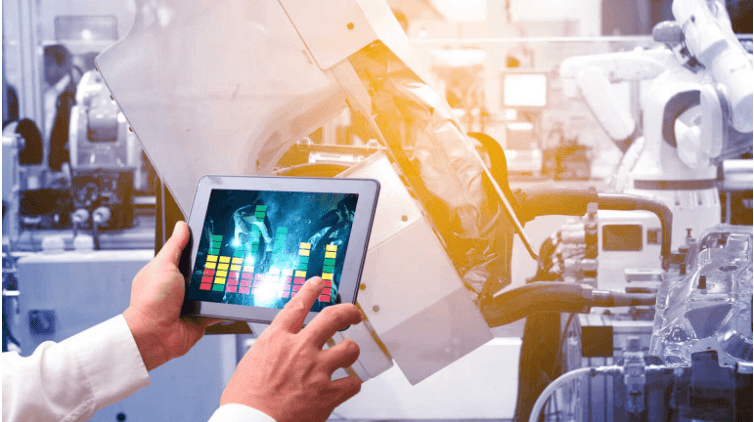
AI and IoT Technology for Manufacturing
Along with the presence of the industrial revolution 4.0, the use of big data, artificial intelligence (AI), and the Internet of Things (IoT) is increasingly massive. The three of them slowly become part of human life. Starting from everyday life to the realm of business.
The McKinsey survey titled Industry 4.0: Reviving ASEAN Manufacturing for the Future, about 93 percent of respondents are business actors who think that industrial technology 4.0 will provide higher benefits compared to the risks that arise.
This belief adds to the massive penetration of digital technology in business aspects. It's not just technology-based companies that are adopting it. Manufacturing-based companies also adopt technology from upstream to downstream to ensure the production process runs well.
Still from the same survey, AI can help manufacturing companies implement effective predictive maintenance, which is efficiency with annual maintenance cost savings of up to 10 percent and inspection costs & waiting time for repairing production machines are reduced by 25 percent.
Therefore, the term manufacturing 4.0 emerged which refers to the trend of the manufacturing industry that relies entirely on technology and the internet (Internet of Things).
There are more and more changes in technology-based business behavior and patterns in the manufacturing industry. In terms of technology, the more automation, the more digital devices, it makes more and more digital data including analytical data. The trend of online tracking will increase, as the online platform grows rapidly.
The use of technologies such as Artificial Intelligence (AI), Internet of Things (IoT), and machine-learning are used to help optimize operational activities, employee productivity, to product and business development.
IoT and AI Working Principle
AI (Artificial Intelligence) will have many forms and forms ranging from machine learning, image/text/voice/hand writing processing, language and recognition, to threat/fraud detection, robotic automation in manufacturing, medicine to autonomous/telematics cars, etc. Many fear that AI and robots are threatening to replace human jobs.
In its working principle, IoT and AI began to experiment. IoT is a place to collect information, including big data collected from various sources and devices. Meanwhile, AI acts as a machine that analyzes and decides what action to take from a data set with predetermined parameters. The combination of IoT and AI will produce more intelligent and accurate algorithms.
So, when IoT is combined with artificial intelligence solutions, it will complete the journey of Data Science and create advanced analytics solutions at a higher level.
What's most important about starting the journey with Artificial Intelligence is a data set that has been standardized to be used for many initiatives, both large and large, from sensors to enterprise applications.
The combination of the two technologies is known as Artificial Intelligent of Things (AIoT). The technology will be able to analyze data and make decisions, and take actions according to the data obtained without human intervention.
Application of IoT and AI in The Manufacturing Industry
According to a McKinsey study entitled "Industry 4.0 Reinvigorating ASEAN Manufacturing for The Future", the manufacturing industry in the ASEAN region has a potential financial impact of 600 billion dollars if it adopts industrial 4.0 technology.
Manufacturing and 18 percent to GDP. (So) it is important to apply the latest digital IoT technology to the manufacturing sector.
An example of the implementation of IoT on one of its clients, which is a service provider of water purification devices or air purifiers. This technology applies predictive maintenance to predict the performance of a device.
Sometimes, the company's clients do not pay attention to the warnings that appear on the water purification devices. In fact, the warning is a sign that the purifier device is not working optimally. As a result, when the device is already damaged, the company requires a long downtime. Not to mention, there are unexpected repair costs.
To solve this problem, predictive maintenance is made by attaching the sensor to the water purifying device. These sensors will send maintenance alerts to the support department via the IoT platform and the cloud, which will later become technicians to go to the field.
So what happens is, this water purifier provider is more proactive. So, instead of waiting for the device to be damaged first or acting when complaints from users are received. But before it broke, they (technicians) had come first.
Different Companies Have Different Needs
Different companies have different needs. One of the most important factors that concern the company is the complexity in operations, including stock keeping units, raw materials, packaging items, to supplier networks.
What is expected is interconnection, actually. Starting from our planning in upstream until later in the product flow from the supplier to the factory, then to the distribution, then to the customer and finally to the end consumer.
This interconnection will connect feedback from customers from various sources for processing. What happens is that big data management is needed so that the processing becomes an innovation for companies to be competitive in the market.
One of the changes that have been implemented is the elimination of manual operations, such as Microsoft Excel operations that already use an automated system. Then, product traceability using a material requirements planning (MRP) system.
In the next target, the factory will adopt supply planning and distribution tools to predict downstream and future planning at the end of November 2021.
The application of an integrated data process is the goal of the implementation of Artificial Intelligence that can produce many insights as a company's competitive value in operational efficiency to support the company's speed in working on the market.
To start digitizing with advanced layers such as Big Data through the implementation of IoT, machine learning, deep learning, focus on the company's priorities which business lines can be enabled to start piloting a new area of initiative Manufacturing 4.0. Start with a small scale that we can use as a reference for expansion in other business lines. Utilizing the right technology and experienced technology partners and the ability to offer many options that can be tailored to the company's needs are crucial to how to start the digitalization journey effectively and most importantly sustainable.



